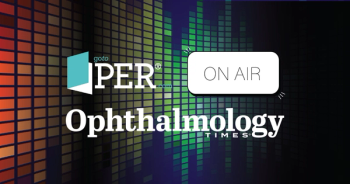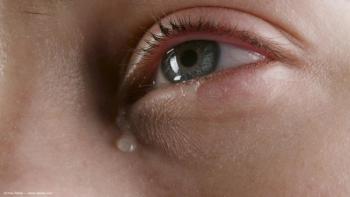
2024 in the rearview: Top stories from this year in optometry
Key Takeaways
- Myopia management emphasized lifestyle-compatible solutions, with promising results from ortho-k lenses and red light therapy, and challenges for DIMS lenses in different regions.
- Dry eye treatment explored allergy's role, tear evaporation, and innovative drug delivery systems, highlighting the need for natural tear stimulation.
This year was brimming with advancements in eye care.
As is tradition in popular culture, it's time to wrap up the year with a list of what happened here at Optometry Times. We traversed many topics together, from great strides in artificial intelligence (AI) to a renewed sense of urgency in
But the fun isn’t over yet! This week, we’re showcasing top content from our colleagues at Ophthalmology Times, Modern Retina, and Ophthalmology Times Europe, so keep your eyes on us (and pardon the pun!) for more top eye care news from 2024.
Myopia
Back in February, Kate Gifford, PhD, BAppSc(Optom)Hons, asked clinicians to evaluate their “why” behind myopia management. Gifford challenged optometrists to look beyond the flashy new technology and remember that the goal is to slow progression in any way that works with patients’ and their parents’ lifestyles.
In the spring, Pauline Cho, BOptom, Med, PhD, and Bi Yang shared their expertise in myopia control. Cho and Yang examine the efficacy of ortho-k and myopia control soft contact lenses, and then they look to the future. They discuss the merits of repeated low-level red light laser therapy, which targets neuronal energy metabolism for neurotherapy of myopia. Partial recovery was achieved 3 months after discontinuation of the therapy.
Carly Lam, PhD, MsC, continues the conversation on the future of myopia in an interview with Hattie Hayes, editor of Ophthalmology Times Europe. Lam shares fresh data on a 8-year study of defocus incorporated multiple segments (DIMS) spectacle lenses. She shared her predictions for the next decade of myopia control, including the barriers that will make or break DIMS lenses in Europe, Asia, and North America. She also urged eye care providers to take myopia more seriously and treat it for what it is: a progressive disease with life-long impact.
Dry eye
Your first patient of the day’s chief complaint is “I have pain behind my eye,” “I have a headache over my eye,” “My vision is fluctuating,” “My eyes are itchy and red,” or all of the above. Where do you start? Shawna Vanderhoof, OD, FAAO, answers this question by examining allergy’s role, which may cause additional symptoms in addition to ocular allergies.
Mile Brujic, OD, FAAO, tackled another common factor in
In October, Katherine M. Mastrota, MS, OD, FAAO, Dipl ABO, wrote on drug delivery systems for dry eye disease. While drops are the most widely used vehicle, Mastrota underscores the limitations, namely, low bioavailability and formulations that feature excipients and/or preservatives. She writes that the ideal solution would be to stimulate more natural tears, which may be achieved via stimulation of the trigeminal nerve pathway.
In August, Ryan Beck, OD, tackled the practice management side of dry eye with a helpful how-to guide on integrating new treatments into your clinic. His 3-step process can help clinicians who are interested in ramping up their dry eye offerings, but are unsure of where to begin.
Advancements in retinal and diabetes care
In October, Betty Zhang, OD, shared a piece on her experience as the only optometrist in a retina specialty clinic. Though she was intimated at first, she made herself an invaluable part of the clinic.
An interesting study was also published this fall, wherein investigators examined the effect of caffeine on retinal vessel density. The study that explored the effects of caffeine on systolic and diastolic blood pressure and retinal vessel density assessed by optical coherence tomography angiography (OCT-A) found that 200 mg of caffeine elevated the BP after 2 hours but did not impact the retinal vessel density.
Another trend in 2024 was the explosion of glucagon-like peptide-1 receptor agonists (GLP-1 RA) to treat diabetes and stimulate weight loss. A. Paul Chous, MA, OD, FAAO, investigates the good, the bad, and the ugly of these drugs as he discusses the effects on the retina and
Technology
In our last cover story of the year, Easy Anyama, OD, and Lori Grover, OD, PhD, FAAO, discuss one of the hottest topics of the year: How can you use AI in your clinic to lighten the workload for you and your staff without sacrificing medical ethics? The authors encourage optometrists not to fear AI, but to take the time to learn more about different types to ensure proper use of the
Back in February, Jason E. Vice, PhD, OT, SCLV, shares a few of the most helpful pieces of technology he uses as an occupational therapist working in low vision rehabilitation. Vice walks through devices that aid in functional vision, diagnostic tools, and new and fascinating technology that leverages AI to help patients find their way around the world.
Jason Bacharach, MD, also tackles new technology that can make an exam much easier. His practice recently transitioned from a traditional bowl perimeter for visual field testing to a portable vision diagnostic, and the reviews from both patients and staff have been a rave.
It’s been a big year for AI, and little shows that more than AOAExcel’s recent investment and endorsement of Barti Software. Barti is an eye care electronic health records company that allows providers to chart in real time with an AI scribe. It also has features powered by AI Office Copilot and a VoIP phone system that allows patients to schedule appointments 24/7. Barti is the first electronic health records company to be endorsed by AOAExcel.
Newsletter
Don’t miss out—get Ophthalmology Times updates on the latest clinical advancements and expert interviews, straight to your inbox.










































